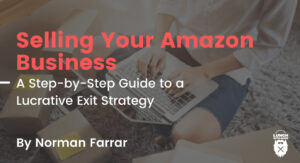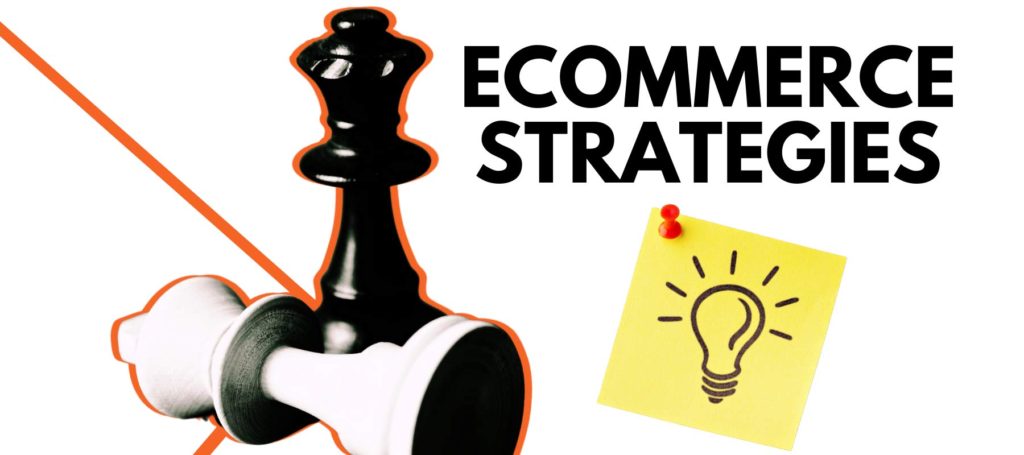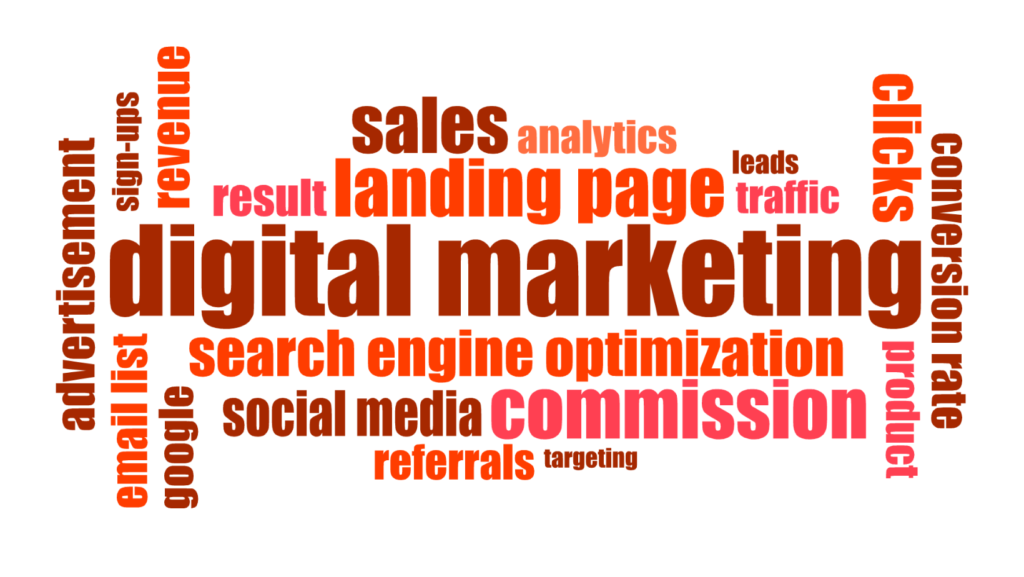

No one could have predicted the rollercoaster that was 2020. There was the pandemic, followed by a huge surge in online shopping. Now, you might be wondering how to build your e-commerce marketing strategy for 2021.
In this article, you’ll learn how to draft a resilient plan for the coming year, focusing on:
2020 offered lessons that every e-commerce entrepreneur should apply going forward. Thanks to the uptick in e-commerce last year, there is now:
Plus, according to a study by Statista, retail e-commerce sales are projected to hit $4.9 trillion in 2021. Meanwhile, B2B e-commerce sales will surpass $1 trillion. Looking ahead, retail sales are projected to grow up to $6.54 trillion in 2022.
There is money to be made in e-commerce in the following months. The key will be to plan every aspect of your e-commerce marketing strategy meticulously. That way, you’ll provide a seamless customer experience while expanding your reach.
Check out below what actions you should take in 2021.
It might sound old school at this point, but search engine optimization (SEO) is a tried-and-true way to get noticed on the internet. Forrester reports that 71% of American consumers use a search engine to find new brands. Adapt to consumer habits and maximize your visibility across search engines.
Google’s search engine results pages (SERPs) are essential for content marketing. Don’t forget, though, to optimize for Google Shopping. According to research from Adthena, Google Shopping ads account for 76.4% of retail search ad spend. This points to the importance of the Google Shopping banner for customers and brands.
To take advantage of Google Shopping, follow these steps:
Remember that Google isn’t the only search engine with powerful indexing capabilities. YouTube, Amazon and Shopify have unique ranking algorithms. Each can help — or hurt — your chances of being found.
Depending on your product, you should target one of these platforms with an SEO campaign. For instance, if you already have a ton of product videos, you should tailor your SEO to YouTube’s algorithm.
In general, you should aim to optimize:
While still relatively new, voice search will become a huge determinant for SEO. 2019 research from CouponFollow found that 45% of millennials used voice search while shopping. This number will only continue to grow as more households acquire a smart home device.
Here are a few tips to optimize your brand for voice search:
As voice recognition becomes more ubiquitous, you’ll have more ways to optimize your page. For now, get a head start on voice search to make your customer experience smooth.

Social media played a critical role in 2020. TikTok saw a boom in popularity. Instagram practically became a news site. Consumers around the world spent more time at home, scrolling through their feeds. Now is the time to leverage this mass attention towards social media.
Every major social media channel has a platform to host creators. There are Instagram influencers, Amazon Affiliate creators and even TikTok breakout stars. Each has the power to influence the purchasing decisions of their audience.
One major tip is to try working with nano influencers. These influencers typically have around 1,000 followers. These smaller audiences are more highly engaged and thus more likely to trust a recommendation from them.
Use this trust to your advantage. Build a network of nano influencers who will promote your brand with:
While you’re thinking about engagement, consider the power of word of mouth. With referral marketing, all you need to do is:
One easy way to get people talking is with a referral promotion. Provide an existing customer with a referral code, which they can then share with a friend. Both the customer and their friend will receive a discount or cool bonus on their next purchase. Different referral marketing platforms can help you send these offers.
Another hands-off way to build your marketing material is to rely on user-generated content (UGC). Anyone on social media can create UGC. This means that, as a brand, you have a world of content at your fingertips.
Try launching a campaign to get social media users engaged. Target each platform with a unique approach. Here are some examples of how to use UGC:
Regardless of which social platform you choose, know that video marketing is vital. Video is highly engaging, and it can offer you a chance to showcase different aspects of your brand. Plus, when you launch a video on social media, you’ll ensure that users share and comment on your upload.
For instance, you can host a Facebook livestream in which you explain a product’s features. Or, you can create a weekly video series on Instagram. Here, you can talk at length about the advantages of a single product.

Outbound marketing has its value, but don’t forget to utilize inbound marketing. With this approach, you will keep existing customers hooked on your brand. This ensures these customers remain an active part of your brand’s community.
Email should still be a crucial part of your e-commerce marketing strategy. Research from Omnisend says that email marketing delivers a $40 return on every $1 invested. Plus, email reminders can help reduce cart abandonment.
You can send many different kinds of emails to all or some of your customer base. Some examples include:
Text message marketing can work much like email marketing. The advantage of text messaging is that it is more immediate. According to VoiceSage. 90% of SMS messages are opened within three minutes of being received.
So much of marketing is delivering the right content at the right time. Capitalize on the immediacy of text messages. Send SMS messages right after a customer completes a transaction. Offer a discount on the next purchase and provide links to browse your products.
Even more immediate is chatbot messaging, which operates in real-time. Chatbot messaging is gaining momentum as a way to connect with customers instantly.
There are so many cool chatbot messaging features that it would be hard to list them all here! To get started, here are a few ways you can utilize chatbots to make sales:
To build your brand’s chatbot, you can enlist the help of a chatbot agency. Or, you can use one of many chatbot software to customize your message flows.
You want your customers to feel like you know them. Ideally, you can offer them the products they’re most interested in. You can give them discounts they’re likely to use. You can follow up with specific product information after their purchase.
Using available software, you can log details about your customers. Demographics like age, location, gender and profession are a given for understanding clientele. Psychographic metrics provide insights into your customers’ personality, values, preferences and opinions. Use both to best learn about your audience, thus giving them personalized experiences.
After you get a customer to your product page, the last thing you want is for them to abandon their shopping cart. Here are a few ways to ensure you convert a browsing customer into a purchasing one:
One cool, developing technology you can use is augmented reality (AR). This allows users to place a virtual version of your product in their physical environment. Statista even suggests that by 2025, AR will be an $18 million industry. So how can you go about using it?
Imagine you sell furniture. Users can hold up their phones in front of their living rooms with their cameras open. With your brand’s AR, they can place one of your chairs in their living room, on their screen. Once they get an idea of the size and aesthetic of your product, they can make an informed purchase.
Even now, the possibilities for AR are expanding. Jump on this trend now, and you’ll impress customers with your technological capabilities. Look for an AR agency that can help transform your product into a virtual experience.
Another technology you can adapt is retargeting. This uses pixels and cookie data to re-engage customers who viewed your page but did not buy anything. This happens pretty often. According to Baymard Institute, an average of 69.8% of online shopping carts are abandoned.
Mitigate this through retargeting software. After a user leaves your site, they’ll see your ads across other platforms. This method of advertising works to remind potential customers of their carts. Recapturing these interested but not committed customers can be super effective. You don’t need to reinvest in outbound marketing when you can recapture these warm leads.
Finally, 2021 is the year to focus on ethics, the environment and community. More customers are choosing to support brands that uphold their personal values. That means that you must connect with customers at the community level.
Inspect the physical aspects of your product. Is its packaging recyclable or compostable? Where did you source the materials for the product? Can you cut down on unnecessary packaging or waste? How large is your carbon footprint? Try to “green” up your products wherever you can.
Once you start to establish your brand as eco-friendly, other green organizations will take note. By supporting you, customers will be choosing a business that respects the environment.
Conversing with customers makes a big difference for your brand image. It’s essential to reach out to customers outside of marketing efforts. Examples include:
Brands often talk about the value of community. In 2021, make sure you uphold that value by investing in your audience. Look at your customers’ demographics and ask what social issues they care about. Get involved where you can to aid in these movements. This could look like volunteering at a community event. Alternatively, you could donate to an organization in need.
Customers will take notice when you actively advocate for them. Don’t worry about trying to spin these activities into profitable ventures. The point of being a socially conscious brand is to improve the lives of your community.
This year is primed to be a profitable one for e-commerce. There will be more mobile sales, accounting for 54% of all online purchases. Customers will be invested in omnichannel fulfillment, with the option to pick up in-store or pay for shipping. Through all of it, the pandemic will still impact purchasing decisions.
All you can do to tackle the coming year is to plan. Embrace whatever new technologies come your way — and be ready for them.
To learn more about ecommerce marketing and content writing, tune into the Lunch With Norm podcast today!

Norman Farrar Entrepreneur and businessman Norman “The Beard Guy” Farrar stands at the forefront of the economic mega-machine known as Amazon Marketplace. As a leading expert with over 25 years of product sourcing, development, and branding expertise, Norm is an advisor to many and an inspiration to all.

Norman Farrar Entrepreneur and businessman Norman “The Beard Guy” Farrar stands at the forefront of the economic mega-machine known as Amazon Marketplace. As a leading expert with over 25 years of product sourcing, development, and branding expertise, Norm is an advisor to many and an inspiration to all.